Commodore Modem 8010 Powersupply pinouts

- PIN 1 = Common (GND)
- PIN 4 = Free
- PIN 2 = 14.6v (AC)
- PIN 5 = Free
- PIN 3 = 14.6v (AC)
Click here for my Commodore Modem 8010.

Click here for my Commodore Modem 8010.
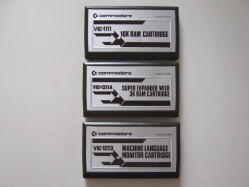
Cartridges list:
click here for the vic-20 cartridges category.
from Wikipedia:
As for commercial software offerings, an estimated 300 titles were available on cartridge, and another 500+ titles were available on tape. By comparison, the Atari 2600—the most popular of the video game consoles at the time—had a library of about 900 titles near the end of its production life (many were variations of another title).
Most cartridge games were ready to play as soon as VIC-20 was turned on, as opposed to games on tape which required a time-consuming loading process. Titles on cartridge included Gorf, Cosmic Cruncher, Sargon II Chess, and many others.
source: wikipedia
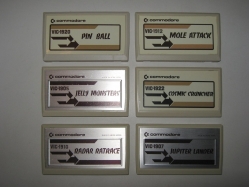
Cartridges list:
click here for the vic-20 cartridges category.
from Wikipedia:
As for commercial software offerings, an estimated 300 titles were available on cartridge, and another 500+ titles were available on tape. By comparison, the Atari 2600—the most popular of the video game consoles at the time—had a library of about 900 titles near the end of its production life (many were variations of another title).
Most cartridge games were ready to play as soon as VIC-20 was turned on, as opposed to games on tape which required a time-consuming loading process. Titles on cartridge included Gorf, Cosmic Cruncher, Sargon II Chess, and many others.
source: wikipedia
Sound fix diagram here. (pdf)
from Cristian Secară Homepage:
The first release (the +3) has a fatal hardware mistake: the 128K sound output is completely distorted.
source: secarica.ro ay8912 Demos
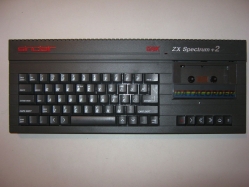
Autopsy:
The original Plus2 (in the grey case) was released in 1987 to get away from the old Spectrums now that Amstrad had taken over. It was very different from previous Spectrums and had a proper typewriter keyboard, built-in casette recorder and 2 joystick ports.
For some unknown reason Amstrad later released a +2A in a black case which is actually a Plus3 with a casette recorder instead of a disk drive.
from Wikipedia:
The ZX Spectrum +2 was Amstrad’s first Spectrum, coming shortly after their purchase of the Spectrum range and “Sinclair” brand in 1986. The machine featured an all-new grey case featuring a spring-loaded keyboard, dual joystick ports, and a built-in cassette recorder dubbed the “Datacorder” (like the Amstrad CPC 464), but was in most respects identical to the ZX Spectrum 128. The main menu screen lacked the Spectrum 128′s “Tape Test” option, and the ROM was altered to account for a new 1986 Amstrad copyright message.
These changes resulted in minor incompatibility problems with software that accessed ROM routines at certain addresses. Production costs had been reduced and the retail price dropped to £139–£149.
The new keyboard did not include the BASIC keyword markings that were found on earlier Spectrums, except for the keywords LOAD, CODE and RUN which were useful for loading software. This was not a major issue however, as the +2 boasted a menu system, almost identical to the ZX Spectrum 128, where one could switch between 48k BASIC programming with the keywords, and 128k BASIC programming in which all words (keywords and otherwise) must be typed out in full (although the keywords are still stored internally as one character each).
Despite these changes, the layout remained identical to that of the 128.
source: wikipedia

Autopsy:
On the last Photo you see two Divide Interfaces. On the left, the PCB Green color, is the Original from DivIde Homepage , On the right, the PCB Red color, is a “clone” from Ebay.
Both working good, but the Divide “clone” has stopped to work after two weeks, chip ram 62256 is broken. Some components of Divide “clone” are differents from the Original Divide interface. like: some values of resistors.
Here it’s the correct picture of solder side on DivIDE 57c. (thanks to Valesoft)
from Divide homepage:
divIDE is an ATA (IDE) interface which takes your ZX Spectrum computing to a whole new level. As the time takes its toll on ageing media such as audio tapes or diskettes, many ZX Spectrum enthusiasts simply stick to emulation for better reliability and comfort.
With divIDE you can put your software collection to a hard disk, CD-ROM or even CompactFlash card and experience your favourite games, demos and utilities the way the were meant to be run – and even better. Using existing firmwares, many users find their Speccy box again a live platform – time for you to make the switch?
Features:
source: divide homepage divide forum papayalabs.co.uk
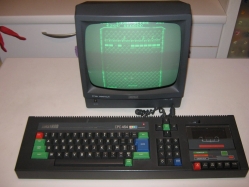
Autopsy:
from Wikipedia:
The Amstrad CPC is a series of 8 bit home computers produced by Amstrad during the 1980s and early 1990s. “CPC” stands for ‘Colour Personal Computer’, although it was possible to purchase a CPC with a green screen (GT64/65) as well as with the standard colour screen (CTM640/644).
The Amstrad CPC’s main competitors were the Commodore 64 and the Sinclair ZX Spectrum, though the CPC was bundled with a monitor unlike the Commodore and the Spectrum. The Amstrad CPC 464 sold approximately over 2 million units.
The first machine, the CPC 464, introduced in 1984, was designed as a direct competitor to the Commodore 64 system. Packaged as a “complete system” the CPC 464 came with its own monitor and built-in cassette tape deck. The CPC 664, with its own built-in floppy disk drive, arrived early in 1985, to be replaced itself later that same year by the CPC 6128.
The original CPC range was successful, especially in Europe, with three million units sold. Following this, Amstrad launched the Amstrad PCW word-processor range, which sold eight million units. Variations and clones of the CPC range were also released in Germany and Spain. The Plus range failed to find a market amongst the higher spec 16-bit Atari ST and Commodore Amiga systems.
source: wikipedia
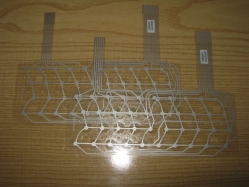
Autopsy:
One of the most common faults on the old “rubber key” spectrums are groups of non working keys. This problem is almost always caused by a worn keyboard membrane.
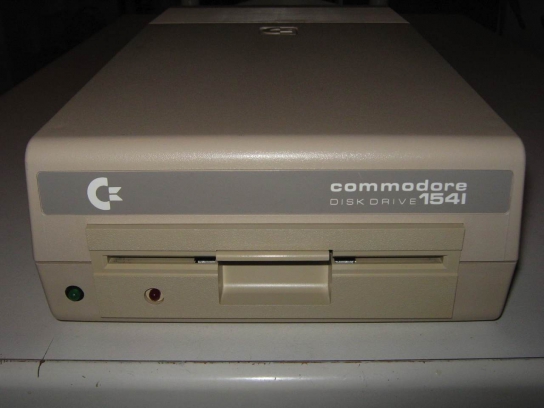
Autopsy:
Click here for my collections of Commodore Floppy Drive and here the clones.
from Wikipedia:
The Commodore 1541 (aka CBM 1541, and originally called VIC-1541), made by Commodore International, was the best-known floppy disk drive for the Commodore 64 home computer.
The 1541 was a single-sided 170 kilobyte drive for 5¼” disks. The 1541 followed the previous Commodore 1540 (meant for the VIC-20). The disk drive used Group Code Recording (GCR) and contained a MOS 6502 microprocessor, doubling as a disk controller and on-board disk operating system processor. The number of sectors per track varied from 17 to 21 (an early implementation of Zone Bit Recording).
The drive’s built-in disk operating system was CBM DOS 2.6. There were two versions of the 1541 mechanics. Early models used a drive mechanism made by Alps Electric, distinguishable by its push-down drive door. Later models utilized a drive mechanism manufactured by Newtronics (Mitsumi), which used a lever release.
All but the very earliest 1541s can use either the Alps or Newtronics mechanism. Visually, the first models, of the VIC-1541 denomination, had an off-white color like the VIC-20 and VIC-1540. Then, to match the look of the C64, CBM changed the drive’s color to brown-beige and the name to Commodore 1541.
source: wikipedia
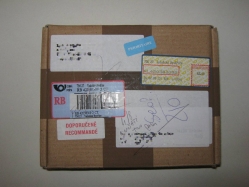
Unboxing:
The divIDE interface with new M’/R’GAL chip support also 16kB allram mode similas as MB02+ interface.
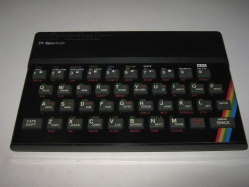
Autopsy:
from Wikipedia:
The ZX Spectrum is an 8-bit personal home computer released in the United Kingdom in 1982 by Sinclair Research Ltd. Referred to during development as the ZX81 Colour and ZX82, the machine was launched as the ZX Spectrum by Sinclair to highlight the machine’s colour display, compared with the black-and-white of its predecessor, the Sinclair ZX81.
The Spectrum was released in eight different models, ranging from the entry level model with 16 KB RAM released in 1982 to the ZX Spectrum +3 with 128 KB RAM and built in floppy disk drive in 1987.
The Spectrum was among the first mainstream audience home computers in the UK, similar in significance to the Commodore 64 in the USA. The introduction of the ZX Spectrum led to a boom in companies producing software and hardware for the machine, the effects of which are still seen; some credit it as the machine which launched the UK IT industry. Licensing deals and clones followed, and earned Clive Sinclair a knighthood for “services to British industry”.
The C64 was a major rival to the Spectrum in the UK market during the early 1980s. The BBC Microcomputer and later the Amstrad CPC-range were other major competitors.
source: wikipedia
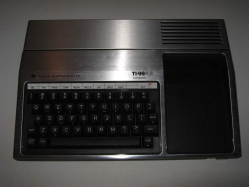
Autopsy:
from Wikipedia:
The Texas Instruments TI-99/4A was an early home computer, released in June 1981, originally at a price of USD $525.
It was an enhanced version of the less-successful—and quite rare—TI-99/4 model, which was released in late 1979 at a price of $1,150. The TI-99/4A added an additional graphics mode, “lowercase” characters comprised of small capitals, and a full travel keyboard. Its predecessor, the TI-99/4, featured a calculator-style chiclet keyboard and lacked any provision for lowercase text.
The TI-99/4A’s CPU, motherboard, and cartridge (“Solid State Software”) slot were built into a single console, along with the keyboard. The power supply board (linear in early systems, switching in later systems) was housed below and in front of the cartridge slot under the sloped area to the right of the keyboard.
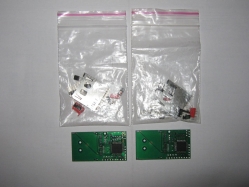
Autopsy:
SD2IEC is a hardware mass storage device using an SD/MMC card and interfacing with the IEC bus. It is based on the ATmega644 microcontroller from the Atmel AVR microcontroller family. The most prominent use of SD2IEC is emulation/replacement of a Commodore-1541 disk drive for a C64.
Hardware and the microcontroller’s firmware is available as open source (GPL).
source: sd2iec.de gitweb forum thread c64-wiki
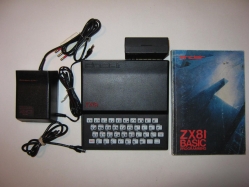
Autopsy:
from Wikipedia:
The Sinclair ZX81 was a home computer released in 1981 by Sinclair Research. It was the follow-up to the Sinclair ZX80. The machine’s distinctive appearance was the work of industrial designer Rick Dickinson.
Video output, as in the ZX80, was to a television set, and saving and loading programs was via an ordinary home audio tape recorder to audio cassette. Like its predecessor it used a membrane keyboard. Timex Corporation manufactured kits as well as assembled machines for Sinclair Research.
In the United States a version with double the RAM and an NTSC television standard was marketed as the Timex Sinclair 1000.
source: wikipedia
Recent Comments